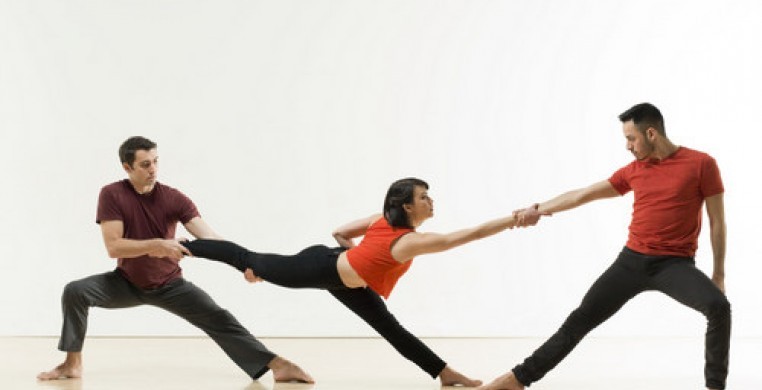When the first installment of Harvest Chicago Contemporary Dance Festival (HCCDF) appeared five years ago, it wasn’t clear why Chicago needed another fall dance fest. In 2009, with Dance Chicago in its 15th year at the Atheneum and Chicago Moving Company’s Other Dance Festival strongly embedded in the Fall dance calendar, why would we need an(other) fall dance festival?
Well, why not?!?
HCCDF began as a vehicle for presenting an eclectic smattering of dance companies, as most festivals do, but what is unique about this particular festival is its ability to attract underrepresented companies and choreographers to the stage of the Ruth Page Center for the Performing Arts. A glance at the program - listing bios of 26 companies presented over three days - reveals the keen ability of co-producers and curators Nicole Gifford and Melissa Mallinson to attract relatively unknown local and regional artists.
Friday’s performance kicking off Season Five of HCCDF was no exception, with hometown heroes presented alongside complete strangers. The evening started off with the hugely impactful, visually striking "Inscribed here, the archive" from Wisconsin-based Maria Gillespie. Gillespie emerged into a sea of white static covering the immense cyc of the Ruth Page stage. Gestures evoking images from Catholicism such as crossing the forehead, lips, and chest accompanied projections of an older woman we assume to be Gillespie’s mother or grandmother. The dance is hauntingly magical, particularly in the moments involving this old woman. Gillespie wraps herself in a sheet of astroturf, bouncing the projection of the woman off of her body. At times the work feels intimate and tender, at times dark and volatile - like a scene from The Ring. Whatever "Inscribed here, the archive" is meant to be, it’s special, and set off the evening on an incredible high note.
Other triumphs on the program included a new piece from the Leopold Group, "Enter Elizabeth, " with Leopold’s strong group of women in their signature leotards dancing to an original composition by Will Post on strips of red carpet that emerge from enormous toilet paper rolls set in the stage left wings. Ballroom dancers Alex and Katja offered a striking duet, "Stay," unfortunately set to popular music of the same name by Rihanna and Mikky Ekko. Somehow it worked, though, perhaps because of the nearly flawless execution of the two willowy dancers in identical flowing white costumes.
Netta Yerushalmy’s "The Force Backwards" from Same Planet Different World was worth a second viewing after its premiere last fall at the Dance Center of Columbia College. The change of venue gave this Night at the Museum-eque piece a different aesthetic; the small, intricate details and purposely blasé facial expressions were viewable from the close-up vantage point of Ruth Page, but the big visual impact that resulted from a white floor and stadium seating at the Dance Center were lost completely. Jacqueline Stewart’s "Stories in Gibberish" could easily be three dances, or an evening length work; Stewart’s keen ability to create beautiful phrases is sometimes tempered by her distaste for editing. She plays with some cheeky elements including an intentionally bored office chair duet and luscious, exceedingly well-executed contemporary dancing set to a track by stand-up comedian Louis CK. Stewart could easily have milked these two things for the entirety of her twenty minutes, and instead gave us a splendid smorgasbord.
The whole evening, though strongly danced, was not without its problems. The predominant challenges in any festival setting are time and production value. Each group typically gets a set block of time, with none left over for full run-throughs, and, in the case of HCCDF, it shows. Big pauses between pieces and awkward technical glitches are easy to explain away as inherent to the festival model, but there are plenty of existing festivals touting higher production values at a lower ticket price. Perhaps the issue in the case of HCCDF is the tech schedule, perhaps it’s the limitations of the venue, or perhaps the companies who want fancy details like video need to bring their own technicians, as is assumed to be the case with Maria Gillespie’s flawlessly executed video and live camera work. Regardless of fault, the competition for fall dance audiences is increasingly stiff, and production value is an issue that Harvest will have to eventually face if it is to succeed for five more years.
--
Note: to be considered for press coverage on SeeChicagoDance.com, submit press materials to editor@seechicagodance.com and post your event here

